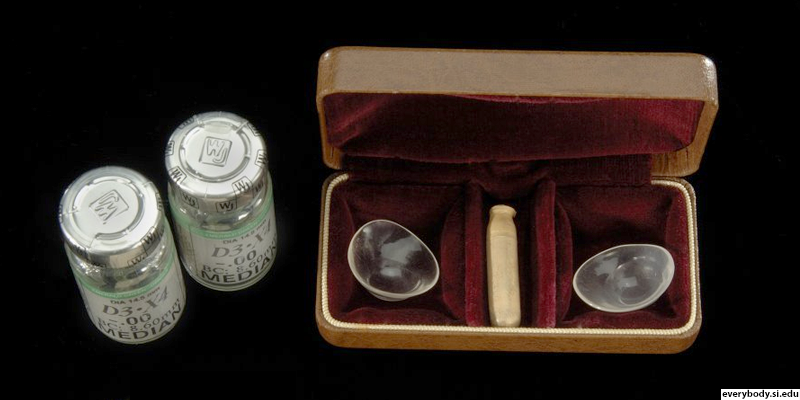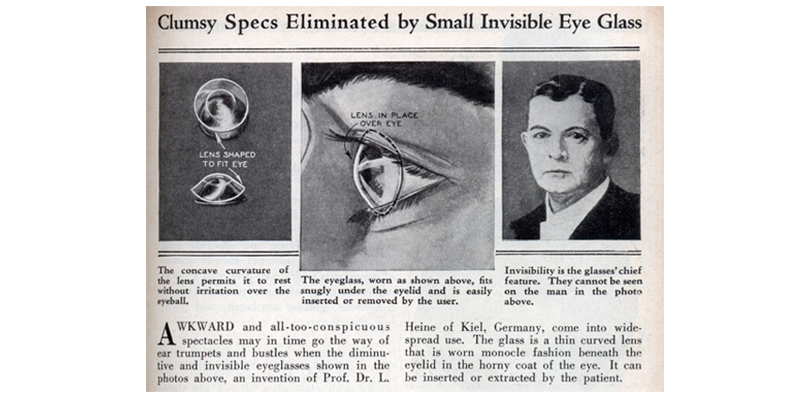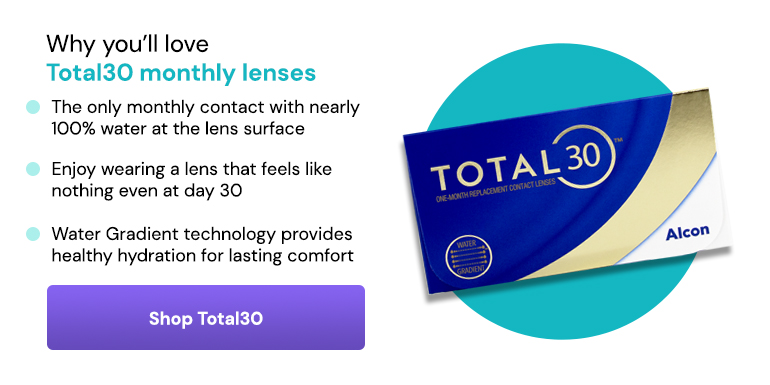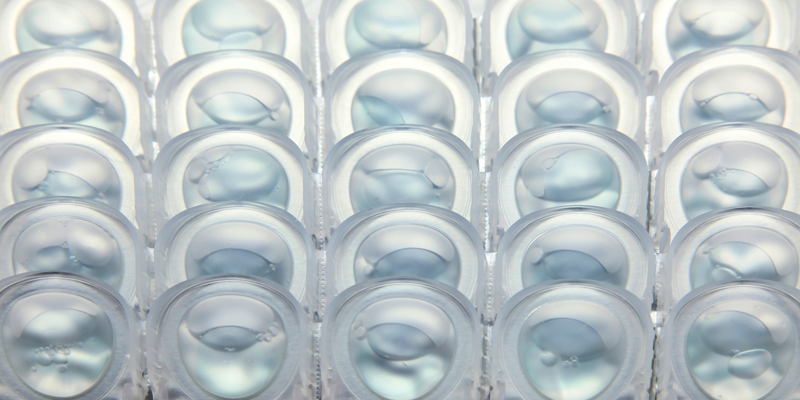The history of contact lenses
Photo by Giammarco Boscaro on Unsplash
Compared to glasses, prescription contact lenses are a relatively modern invention. Glasses were created over 700 years ago in Italy, and cases of gemstones being used for magnification have been recorded as far back as the 1st century. In contrast, contact lenses that cover only the cornea have existed for just over 60 years. But the concept of contacts has its own long history.
1508 - Codex of the eye
The story of the contact lens begins with one of the most famous inventors of all time. In 1508, Leonardo da Vinci wrote the ‘Codex of the Eye’. In his manuscript, Leonardo considered the possibility that submerging one’s head in a glass bowl of water could correct certain vision ailments!
Remarkably, da Vinci went on to create a glass lens with a large funnel on one side for pouring water into it. The invention proved to be highly impractical, and it soon became clear that the concept was too far ahead of its time.

1633 - Descartes’ design
Around 150 years later, mathematician René Descartes suggested an alternate method that was much closer to today’s product. Descartes described a lens at the end of a water-filled tube, which was placed on the cornea.
Unfortunately, Descartes’ solution was no more practical than da Vinci’s. The tubes would require external support to rest on the eye, and the design didn’t allow for blinking. However, Descartes deserves credit for being the first to suggest placing the lens directly on the cornea, rather than the full sclera (the white of the eye).
1801 - Young’s prototype
In 1801, English scientist Thomas Young created a prototype directly based on Descartes’ original designs. Young attached these water-filled lenses to his own eyes using wax and wrote of the results.
He observed that Descartes’ lenses blurred his vision but could be corrected with another set of lenses. This helped to prove the original principles set out by both da Vinci and Descartes, paving the way for more practical designs.
1823 - Herschel’s proposition
English astronomer Sir John Herschel was able to contribute further to practical contact lens design, with his suggestions for lens grinding and fitting. In 1823, Herschel proposed the idea of grinding a glass contact lens to fit the surface of a cornea as closely as possible.
Herschel suggested the use of a physical mold of the eye, to allow producers to create lenses that fit each individual wearer accurately. To help prevent the lens from damaging the eye, Herschel also suggested using a gel filling that would sit between the cornea and lens.

1887 - Contact lenses become a reality
As the 19th century progressed, creating contact lenses for the general public became increasingly feasible. The advancement of glass blowing, lens-grinding and medical anesthesia meant that accurate replication of the eye’s curvatures was now possible.
In 1887, German artificial glass eye makers F. A. Muller created a transparent contact lens. These early contact lenses weren’t designed to correct vision, instead proving effective at protecting diseased eyes.
Further advances in lens creation meant that by the start of the 20th century contact lenses were starting to prove their value for vision correction. The technology was by no means ready for widespread use though, and the lenses were only occasionally used for specific medical purposes.
Small glass lenses struggled to properly attach to the eye, while larger lenses greatly interfered with the natural lubrication. The impermeable nature of these early glass lenses limited their potential use heavily, requiring constant artificial lubrication. They were also reported as being uncomfortable, and the fragility of small glass lenses brought the danger of serious injury to the eye. Contact lenses for widespread vision correction still had a long way to go.

1936 - Plastic vision
William Feinbloom was the first to use plastic in contact lenses, creating a plastic scleral lens in 1936. With no risk of breaking in the eye, these new lightweight lenses revolutionised the industry and rendered glass lenses almost totally obsolete.
Despite these huge advancements, the lenses were still scleral lenses covering the whole front of the eye, so they were only wearable for short periods of time.

1948 - The corneal lens is born
It wasn’t until 1948 that the corneal lens was finally created – by accident. Kevin Touhy, an English optical technician, was sanding down a plastic lens when the scleral part of the lens fell off.
The remaining material was only enough to cover the cornea, and Touhy decided to try wearing it himself. Remarkably, the far smaller lens was still able to remain in place whilst looking around and blinking.
The reduced surface area meant less interference with the eye’s natural lubrication and greater comfort. Various thinner designs were introduced through the 1950s, but it wasn’t until the 1960s that the industry saw another big shakeup.

1960 - The modern age of contact lenses
In 1960, chemists Wichterle and Lim were able to refine the process of casting hydrogel. This resulted in soft, hydrophilic contact lenses that were much more comfortable than their hard plastic counterparts.
The early days of soft contact lenses presented a whole host of new problems. The high water content made them extremely difficult to handle, and the optical quality was worse than hard plastic lenses that were produced later.
After almost a decade of improvements, Bionite soft lenses were made available in the United Kingdom. Unlike hard contact lenses they could be worn throughout the day by most users with relative comfort.
1971 - Soft hydrogel lenses reach the US and Canada
In 1971 Canadian eye health product company Bausch & Lomb Inc. attained approval from the U.S. Food and Drug Administration to sell their soft hydrogel lenses. They proved to be incredibly popular, helping to kickstart the modern age of contact lenses. Over time, the hydrogel framework for contact lenses was expanded and improved upon. 1981 saw the release of extended wear soft lenses which could be worn overnight.
1986 - Gas permeable extended wear lenses introduced
In 1986, gas permeable extended wear lenses were released. Gas permeable (GP) lenses are made of firm, durable plastic that transmits oxygen. Because they have no water content, GP lenses are less likely to harbour bacteria than soft contacts.
1987 - Disposable soft contact lenses released
1987 saw the commercial release of disposable soft contact lenses. These soft lenses overcame hygiene problems by simply allowing the user to throw them away after use. The disposable contact lens was a huge success and remains the most popular type to this day.
Today, contact lenses are a far cry from da Vinci’s initial concept. For the vast majority of wearers, they’re very comfortable, and often unnoticeable, allowing people to live their lives freely with excellent vision. Browse through our website and enjoy a vast range of contact lenses, including daily and monthly lenses, ensuring you will find the lenses you need.



